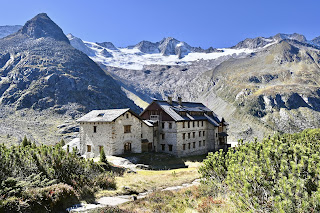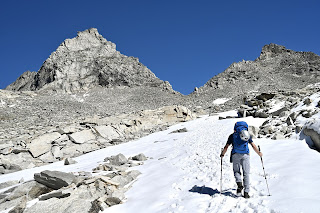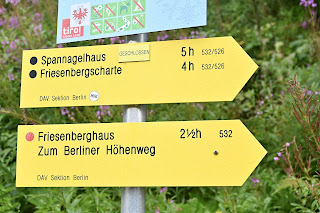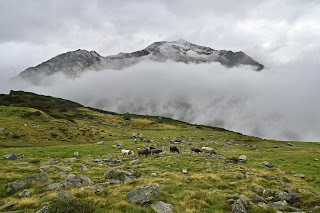Public transport is excellent in Munich (apart from the odd "signal problem"), climate change is real and Alpine peaks are close. So putting one and one and one together, this means that we should mainly use public transport for mountaineering.
So on 28.11.2021 just at 7.17 h, I took the S3 S-Bahn to Munich main station and at 7:59 h I was sitting on the regional train to Weilheim. A quick change at Tutzing to Kochel, a bonny town on lake Starnberg. The tracks were dusted with snow and so although it was just the end of November, it was clear that this would be a snowy day. What was not quite as clear was that this would be a hard, epic mountain day with a nocturnal finish.
Kochel to Benediktenwand (1800 m). Here is the regional train in Kochel, the end of the line and the start of the walk. Plenty of snow already at the lowest point!

I had planned the tour via Komoot and had map & compass, a Garmin watch with mapping function and Komoot (https://www.komoot.de/tour/583493929) on the phone for navigation. After the station in Kochel the walk entered quickly the maze of paths in the forest and I went wrong a few times due to my lazy navigation. At times there were some blue skies with and at times I could see the bright white plains through the trees. Here is one of those views...

... and here is another one...

I then ascended snowy paths to the Olperer Alm which is here...

After the Olperer Alm, I ascended the Rosengarten, a steep zig-zag ramp that is hard to see under snow. Then easy paths under 20 cm of snow on the Southern side of the Glaswand before the last climb up to the Benediktenwand (1800 m). Here is a sign showing the way...

I met a team of three who had a (very) cold night in the Brauneck Schutzhütte. They were roped up with an olive rope and also carried military gear so I assume they were army folk...

In the Benediktenwand Schutzhütte I cooked some Korean noodles and had a 10 min snooze. Also, I realized that I had not done half of the walk. I left the hut at around 13.30 h, I think.
Benediktenwand to Lenggries. This part was tougher than anticipated not helped by the fact that I missed the presumably easier lower path and instead followed a Cuillin-like route which was hard to find amount the Latschen (small pines). I went the wrong way a few times and ended up in the thicket and had to reverse. The scrambling was easy enough and there were icy steel cables at times. The route went over various exposed „Köpfe“ such as the Achselköpfe (watch out for animal protection zone signs). Here is a brief moment when the fog lifted...

I eventually found a trail to the „Idealhang“ of the skiing area and I really should have descended here. Instead, I went past this wooden chapel...

... and snowed up myself (it was getting dark at this point)...

... to the hut near the top of the Brauneck as I knew this bit from countless ski tours. Here, one photo of the glen below where the regional train was waiting for me.

So I was walking, jogging, and bum-sliding down the piste to the Wegscheidalm. Another 3-4 km to Lenggries train station which was waiting for me after probably 24 km (my watch battery only lasted to the Brauneck) of walking and nearly 2000 altimetres.
In summary, this is an eco-friendly mountaineering traverse of the Benediktenwand, a classic, Bavarian mountain. It is tough in summer and I found it epic in winter. The key difficulties in winter are route finding, the distance, and nearly 2000 m of ascending (Strava said 1800 m before the battery went flat so I assume 2000 m).
HW



















































